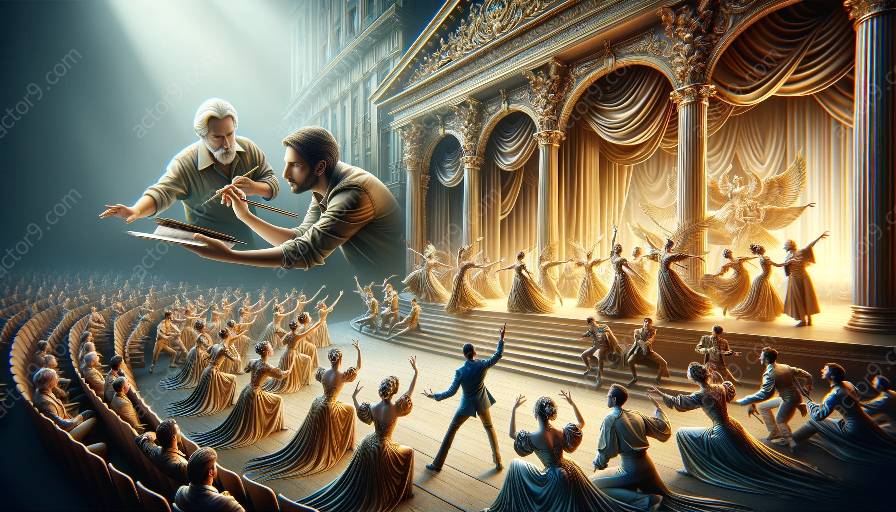Opera directing and choreography are deeply influenced by societal norms and expectations, as they shape the themes, narratives, and presentation of opera performances. In this comprehensive topic cluster, we will delve into the intricate relationship between societal norms and opera directing and choreography, examining how these art forms mirror, challenge, and transcend societal conventions.
Understanding Societal Norms and Expectations in Opera
Before delving into how opera directing and choreography are influenced by societal norms, it is essential to grasp the prevailing norms and expectations within the societies where opera is performed. Societal norms encompass a wide range of cultural, ethical, and behavioral standards that guide human interactions and experiences. These norms are often deeply rooted in historical contexts, traditions, and prevailing ideologies.
In opera, societal norms and expectations are reflected in the storyline, character portrayal, and overall themes. For instance, operas set in different historical periods may adhere to the social constructs and hierarchies of that time, depicting the societal norms pertaining to class, gender, and morality. Similarly, the portrayal of love, romance, and relationships in opera often aligns with the prevalent societal ideals and norms surrounding courtship and marriage.
Influence on Opera Directing
Opera directing involves the interpretation and staging of the opera, encompassing the visual and dramatic aspects of the performance. Societal norms and expectations play a pivotal role in shaping the director's approach to staging an opera. Directors often strive to create a production that resonates with contemporary audiences while honoring the historical and cultural context of the opera.
Moreover, societal norms influence the portrayal of characters and their interactions on stage. Directors may choose to reinterpret traditional operas to challenge outdated stereotypes and societal expectations, thereby fostering a more inclusive and diverse representation on stage. Furthermore, the visual elements of opera directing, including costume design and set construction, are influenced by societal aesthetics and fashion trends.
Influence on Choreography
Choreography in opera encompasses the movements, dance sequences, and physical expression of the performers. This aspect of opera production is significantly influenced by societal norms and expectations related to body language, physical conduct, and dance forms prevalent in the culture. Choreographers infuse these societal cues into the movements of the performers, aligning the choreography with the historical and cultural context of the opera.
Moreover, societal expectations regarding gender roles and expressions of emotion have a profound impact on the choreography in opera. Choreographers navigate these norms to create compelling and authentic portrayals of characters through movement and dance. Additionally, choreographic choices may challenge traditional gender roles or embrace diverse movement vocabularies to reflect the evolving societal attitudes towards physical expression and embodiment.
Impact on Opera Performance
The influence of societal norms and expectations on opera directing and choreography directly translates into the impact of the performance on audiences. Opera performances serve as a mirror to society, reflecting its norms, conflicts, and aspirations. By incorporating and sometimes subverting societal expectations, opera productions engage audiences in critical reflection and dialogue on prevalent societal issues.
Furthermore, the resonance of opera with contemporary societal norms enhances the relevance and relatability of the performance for audiences. It fosters a dynamic interplay between the timeless themes of opera and the ever-changing fabric of societal norms, thereby ensuring the continued relevance and enduring appeal of opera as an art form.
Conclusion
Opera directing and choreography thrive on the intricate interplay with societal norms and expectations, shaping the artistic expression and resonance of the performances. By understanding the multifaceted influence of societal norms, directors and choreographers can craft compelling and meaningful productions that resonate with audiences across diverse cultural landscapes and historical contexts.































